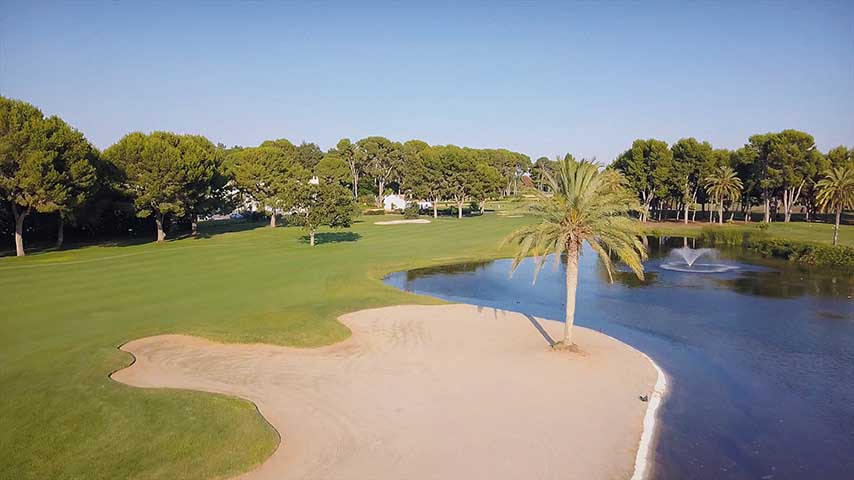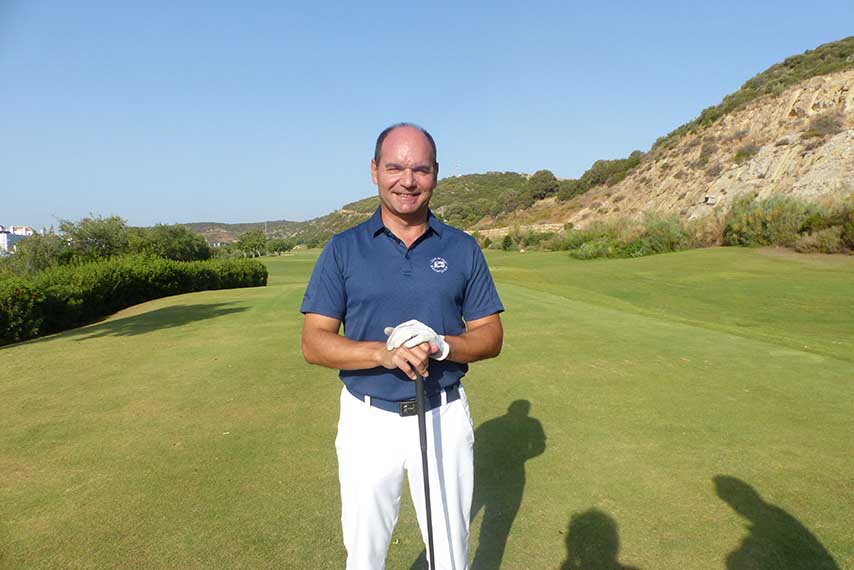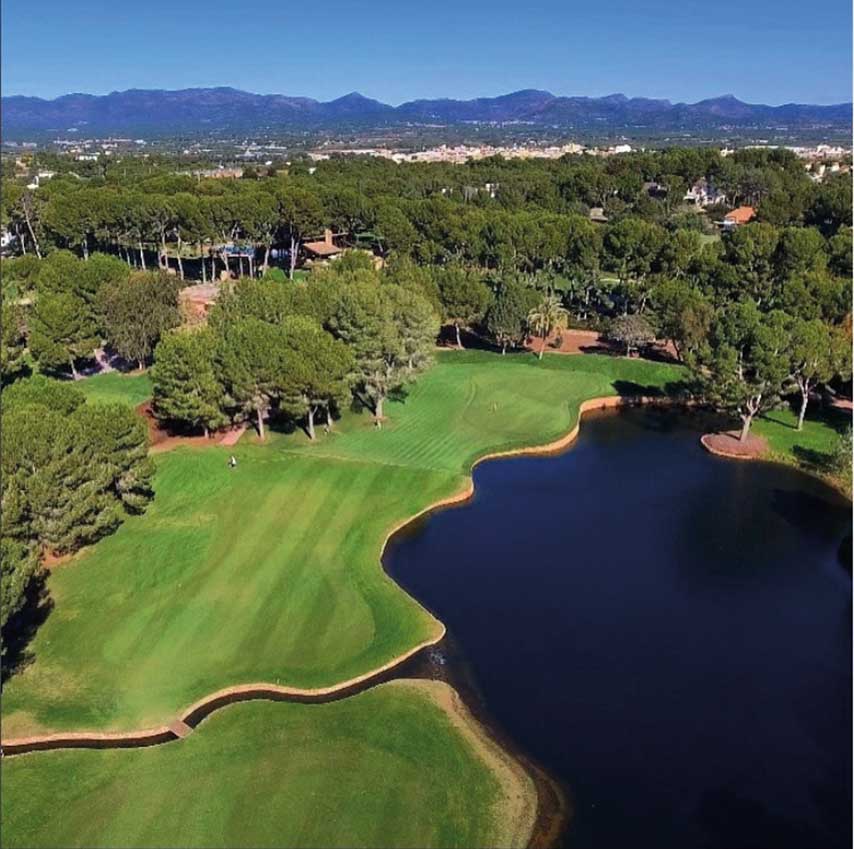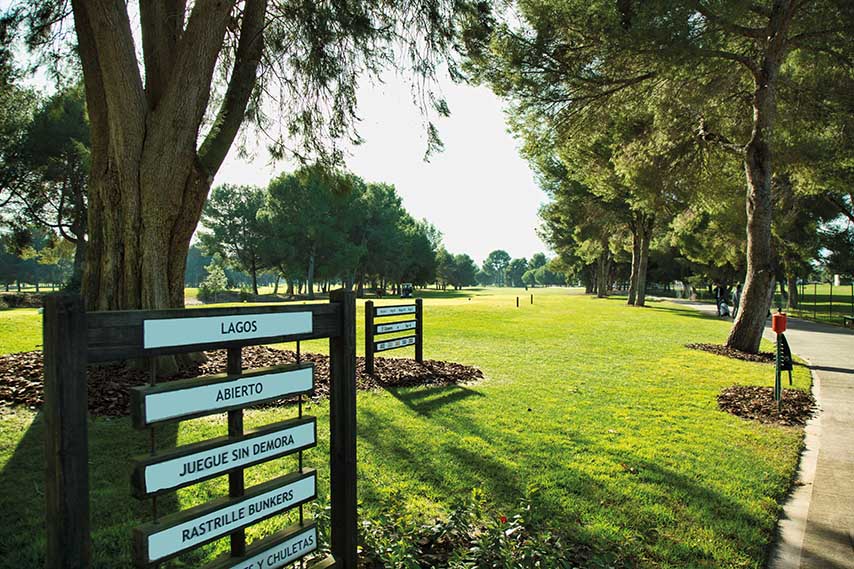The first golfers in Valencia played at the Manises aero club in the 1950s and 1960s. At the end of the 1960s there were problems related to continuing to play at the base and alternatives were sought. On 26 April 1969, Escorpión Golf Club was established with the idea of playing at another golf course. The club designated Enrique Puigmoltó, Viscount de Miranda, and Jose Manuel Gómez-Trenor Fos as its representatives to lead the 12 founding members.
While choosing the ideal place and proceeding with both the purchase of the land and construction of the course, an agreement was reached with official tourism authorities to play at the Parador de El Saler golf course until Escorpión Golf Club had its own course. Six years later, in 1975, the current course located in the Torre en Conill urbanisation was inaugurated.

Designer Ron Kirby was commissioned to develop a 27-hole project. However, initially construction of the first 18 holes was contracted to Ibergolf. One of the interesting aspects of the course was that it was surrounded by orange trees. In its early years, it hosted many amateur and professional tournaments, both national and international, including the 1979 Spanish Professionals Championship, the 1980 Spanish Open and the 1995 Mediterranean Open (both the latter, European Tour events).
In the 1980s, the orange trees were replaced by pines, which enabled the layout to develop into its current landscape of broad fairways lined with large masses of pine trees, providing shade during the summer and security for players on adjacent fairways, as well as reducing the effect on play of winds.

At the end of the 1970s, the club had 400 members, an insufficient number to maintain the club with its ordinary fees so frequent apportionments were necessary to guarantee its survival. A few years later a total of 2,000 members was achieved and the club was able to begin considering an extension to 27 holes that would give it ample amenities to accommodate all members.
Finally, under the presidency of Juan Bover, construction began on the new nine holes, with a design by Alfonso Vidaor (Green Project) based on the initial master plan developed by Ron Kirby. In 2002, these works were finished and the course was presented in its current configuration of three nine-holes layouts: Masía Lagos and Nuevos, which are combined in nine-hole pairs to create the following three courses: Blue, Red and Yellow.
In 2005, the golf amenities were complemented with the construction of a nine-hole par-three pitch & putt course, where members can improve their short games and younger players can develop their skills to eventually move up to play the "long course”.
Over the last 25 years, Escorpión Golf Club has fine-tuned the initial concept conceived by the founding members of being a quintessential family golf club for Valencian golfers. The club has 2,600 members, of whom 500 are under 18 years. In this respect, its facilities include more than 30,000 square metres dedicated to youngsters, including a playroom, youth club, cafetería, playground, grass football pitch, practice range, tennis course, two pádel tennis courts, recreation area and a team of seven instructors, every weekend.

Throughout the school year there is a three-level golf academy with more than 250 students. In addition, courses and activities for youngsters are organised during the Easter and summer holidays.
To commemorate the club’s 50th anniversary, a series of initiatives have been undertaken and several events held, highlighted by a youth party on 8 June involving 300 children, and a huge social extravaganza on Saturday 29 June. when 330 players took part in the golf competition and 450 members attended the celebratory anniversary dinner.

An institutional celebration is also planned in autumn, with Spanish and Valencian golf federation representatives invited, as well as leading local authorities, other clubs, and personalities from the worlds of sport and society in general.
In addition, photos, documents, press articles, reviews and testimonies have been compiled in order to organise both a photographic exhibition of the club's history during this half century and a series of videos aimed at understanding the club’s evolution.
Following a renovation of the club's dining area, members have been able to take advantage of the new new space and mount photos featuring and listing the club's champions, presidents, honorary members, founding members and leading committee members, as well as showcasing major trophies and awards won by the club since its foundation.
These include the Golf Merit Medal awarded by the Royal Spanish Golf Federation to mark the club’s history during the past 50 years, and the "Family-Friendly Golf Club of the Year" award presented by Luxury Travel Guide magazine in recognition of the club’s efforts in promoting golf and leisure in a family environment (both awards having been received in 2018).

Club director Marcos Lería, a highly regarded professional in the world of golf course management, talks about the past, present and future of Golf Escorpión.
What has been Escorpión Golf Club’s contribution to Spanish golf over the past 50 years?
Escorpión Golf Club is the Valencia region’s private social golf club par excellence, thanks to the work carried out since its foundation in 1969, and one of the most relevant at a national level. It has 2,600 members and has generated great players at both a professional level, highlighted by Carlos del Moral, and amateur, for which the list would be much longer. It has hosted two tournaments on the European Tour, Spanish Professional Championships and Spanish Championships in all amateur categories, has been the venue for the Queen’s Cup, every year hosts the Valencia Regional Cup and recently received the Golf Merit Badge, awarded by the Royal Spanish Golf Federation, from its president, Gonzaga Escauriaza. In addition, the club’s golf academy has welcomed more than 200 students every year, so we can say that it has been a true nursery for golfers in the Levante area.

What key aspects of the club would you highlight?
Without a doubt, its elegant ambience and comprehensive amenities, something you sense as soon as you enter the club. The club has 27 holes plus a nine-hole pitch & putt layout, as well as a great family-orientated and social atmosphere, without overlooking the high level of course maintenance and the gastronomy. We have a somewhat unusual restaurant situation, with a cafetería service and members’ service coexisting, including the club café, youth club café, pool and snack bar out on the course, managed directly by the club and aimed at club members and their guests. An “external” restaurant on the first floor is operated by a third party, opens its doors at midday from Tuesday to Sunday and offers diverse and attractive culinary options, for both members and visitors. Another key feature at the club are special facilities for youngsters, with a team of seven monitors, working every weekend in a 30,000 square metre area, responsible for ensuring the social life is pleasant for all. The quality of all the services is exceptional, with 10 people meeting the needs of members.
What are the club’s main challenges in the short and medium term?
The most immediate challenge is to continue improving the facilities and make sure they remain up-to-date, thanks to an ambitious general investment program that is undertaken each year and focuses on the main priorities, with sustainability playing an important role because respect for the environment must be taken into consideration with every decision of this kind. This investment program includes the renovation and modernisation of the course, improvements to the infrastructure, renewal of the fleet of electric trolleys, upgrading the gymnasium, and expanding the youth club cafetería, among other initiatives. It is also planned to introduce innovations at the golf academy, to help golfers improve their game and attract others to the sport. Competition is intense, and I don’t mean from other courses but more from young people’s way of life, in which the audiovisual, the virtual and the different ways of interacting with their environment prevail, so making golf attractive to them and encouraging them to come to the club is increasingly complicated. Marketing and media communications are another priority we are dedicating resources to, as well as training our team to help them adapt to our members’ increasing demands.




